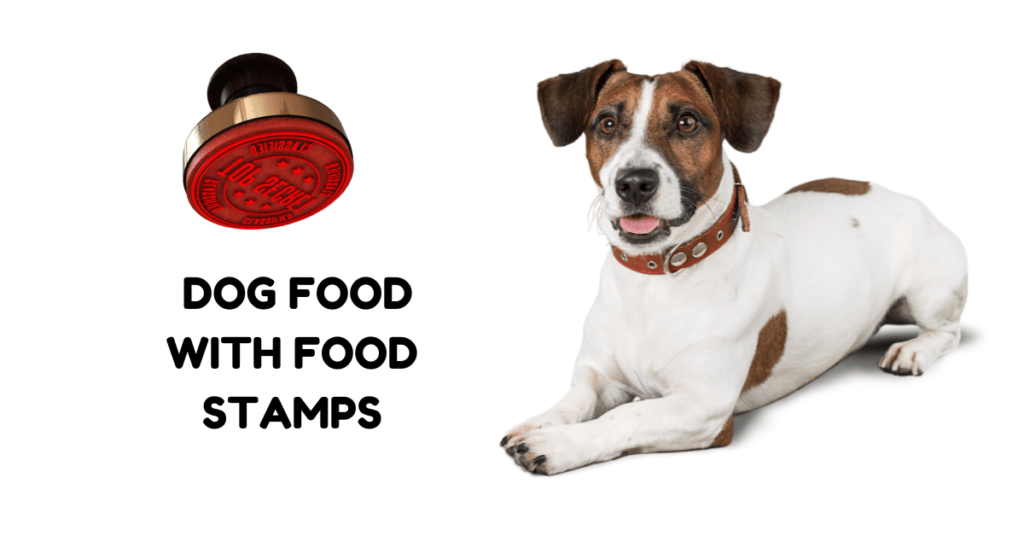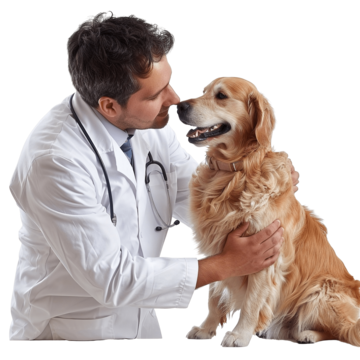Can You Buy Dog Food with Food Stamps?
The short answer is no, dog food cannot be purchased using SNAP (Supplemental Nutrition Assistance Program) benefits. But what does this mean for pet owners facing financial hardship?
In this article, we’ll explore why this restriction exists, what alternatives are available, and how pet owners can manage pet food costs effectively.

Why Can’t You Use Food Stamps to Buy Dog Food?
SNAP benefits are specifically designed to help low-income individuals and families afford food that is essential for human nutrition. The program does not extend to pet food or non-food items like cleaning supplies, toiletries, or household goods.
Federal Guidelines for SNAP Benefits
The USDA (United States Department of Agriculture), which administers SNAP, strictly defines eligible food items. These items must be necessary for human consumption and do not include pet food. This guideline ensures that the program focuses on alleviating food insecurity for humans. Although pet food is essential for many, the USDA does not consider pets’ nutritional needs in its allocation of resources for SNAP.
The exclusion of pet food is also due to funding limitations. Expanding SNAP to include non-human food products like dog food would require significant reworking of the program’s budget and guidelines.
For many, pets are integral members of the family. However, during tough economic times, affording both human groceries and pet food can be challenging. The restriction means that pet owners must look for other solutions when SNAP benefits cannot help cover these costs.
Alternatives for Pet Owners Struggling to Afford Dog Food
While you cannot use SNAP benefits to buy dog food, there are still many resources and strategies available to help pet owners in need. Below are some ideas and programs that can support you during tough financial times.
1. Pet Food Assistance Programs
Several organizations and local initiatives offer free or low-cost pet food to those who need it. Here are some key programs you can explore:
- Similar to human food banks, pet food pantries distribute pet food to families in need. These programs may be run by local animal shelters, community groups, or national organizations.
- This national nonprofit organization provides pet food assistance to people experiencing homelessness or financial hardship.
- Many local humane societies and animal shelters run pet food banks or offer other forms of assistance to pet owners in need.
2. Local Charities and Nonprofits
In addition to pet food assistance programs, many local charities and nonprofit organizations offer support for pet owners. Look for community outreach programs or local churches that may include pet assistance in their services.
You can also keep an eye out for local pet retailers or events that offer free or discounted pet food. These stores often host donation drives and distribution events, so be sure to stay updated on any relevant initiatives.
Tips for Reducing the Cost of Dog Food
Even if you cannot access pet food assistance, there are still strategies to reduce your dog food expenses. Here are some cost-effective ideas to consider:
1. Buy in Bulk
Purchasing larger quantities of dog food often results in a lower price per serving. Look for bulk buying options, especially if you have more than one pet. Many stores offer discounts for bulk purchases.
2. Use Coupons and Discounts
Stay on the lookout for coupons, sales, and promotions from pet food brands or retailers. Websites like PetzySpot often feature seasonal discounts, which can help you save on high-quality food.
3. Consider Store Brands
Many store brands offer quality dog food at a fraction of the price compared to premium brands. These options are typically nutritionally balanced and can be a great alternative if you’re trying to cut costs.
For budget-friendly options, check out our review of Costco dog food to explore affordable, high-quality choices for your pet.
4. Temporary Home-Cooked Meals
In an emergency, a temporary solution for your dog’s meals may be home-cooked food. Simple recipes like cooked chicken and rice can work as a short-term fix, but be sure to consult with your veterinarian before making any dietary changes to ensure your dog’s health.

Balancing Pet Care with Financial Challenges
Caring for pets while managing a tight budget requires careful planning. Here are some tips for balancing financial responsibility with the needs of your pet:
1. Include Pet Expenses in Your Budget
Including pet-related expenses in your overall financial plan can help you manage costs more effectively. By setting aside a specific amount for pet food, you’ll be better prepared for ongoing expenses.
2. Preventative Care
Routine veterinary checkups, vaccinations, and parasite control can prevent costly medical expenses down the road. Regular vet visits can ensure your pet remains healthy and avoid costly emergencies.
3. Take Advantage of Loyalty Programs
Many pet supply stores offer loyalty programs that reward frequent purchases with discounts. These programs can help you save money on pet food over time.
To learn more about keeping your pet healthy, visit our page on how much food to feed your dog to ensure you’re meeting their dietary needs appropriately.

While SNAP benefits do not cover pet food, there are numerous alternatives and strategies available to help pet owners in financial need. Whether you seek out pet food assistance programs, take advantage of discounts, or explore budget-friendly dog food options, there are ways to ensure your pets are well-fed even in tough times. With careful planning and resourcefulness, you can provide for both your family and your furry companions.







